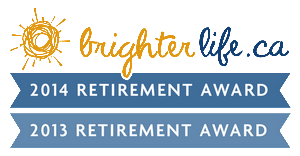I give a workshop on Technology and seniors that focuses on health care technologies, and I realized that the smart phone can also be used as a technology to help us monitor ourselves and to have fun. If anything on this list catches your eye, check them out by clicking on the link or by just typing the name of the function in Google search, preceded by the word smartphone. You will find plenty of apps for both Android and Iphones listed.
Some of these features require you to turn on that function. Again, the Internet is your friend. Search for what you want to do by typing in the function followed by your phone model, like direct call samsung galaxy S6.
Manage your thermostat and control your home's lights
Monitor your heart rate
Speak a text, have it translated into words and sent.
Have an e-mail or text read to you.
Identify images
Measure speed, height, or distance of something
Find out why your check engine light is on
Turn your Android into a games console
Identify song titles
Visual voicemail
Mail a postcard
Block spam phone calls
Use camera as a magnifying glass
Snap a picture with the volume button
Use as a universal remote
Create a Wi-Fi hotspot
Barcode and QR code reader
Correct for color blindness
Use Data saver setting (Android)
Use Data saver settings (Iphone)
Quick launch the camera
Download large files
Create a personal sound meter
Take a screenshot.
Digitize documents.
Direct call (put the phone to your ear and it dials the contact on the screen)
Split screen (2 windows open at once...sometimes called multi-tasking)
Leveler & compass (Iphone)
Leveler and Compass (Android)
Metal Detector for finding dropped screws
Distance finder
Flashlight (these listed to not require access to personal information)
Send a mobile fax (this will cost as there is a fee for sending faxes)
Connect to a computer and use phone as an external hard drive
Transfer files wirelessly from phone to computer
Some of these features require you to turn on that function. Again, the Internet is your friend. Search for what you want to do by typing in the function followed by your phone model, like direct call samsung galaxy S6.
Manage your thermostat and control your home's lights
Monitor your heart rate
Speak a text, have it translated into words and sent.
Have an e-mail or text read to you.
Identify images
Measure speed, height, or distance of something
Find out why your check engine light is on
Turn your Android into a games console
Identify song titles
Visual voicemail
Mail a postcard
Block spam phone calls
Use camera as a magnifying glass
Snap a picture with the volume button
Use as a universal remote
Create a Wi-Fi hotspot
Barcode and QR code reader
Correct for color blindness
Use Data saver setting (Android)
Use Data saver settings (Iphone)
Quick launch the camera
Download large files
Create a personal sound meter
Take a screenshot.
Digitize documents.
Direct call (put the phone to your ear and it dials the contact on the screen)
Split screen (2 windows open at once...sometimes called multi-tasking)
Leveler & compass (Iphone)
Leveler and Compass (Android)
Metal Detector for finding dropped screws
Distance finder
Flashlight (these listed to not require access to personal information)
Send a mobile fax (this will cost as there is a fee for sending faxes)
Connect to a computer and use phone as an external hard drive
Transfer files wirelessly from phone to computer


